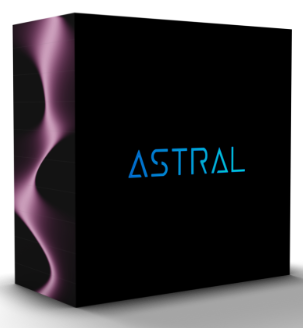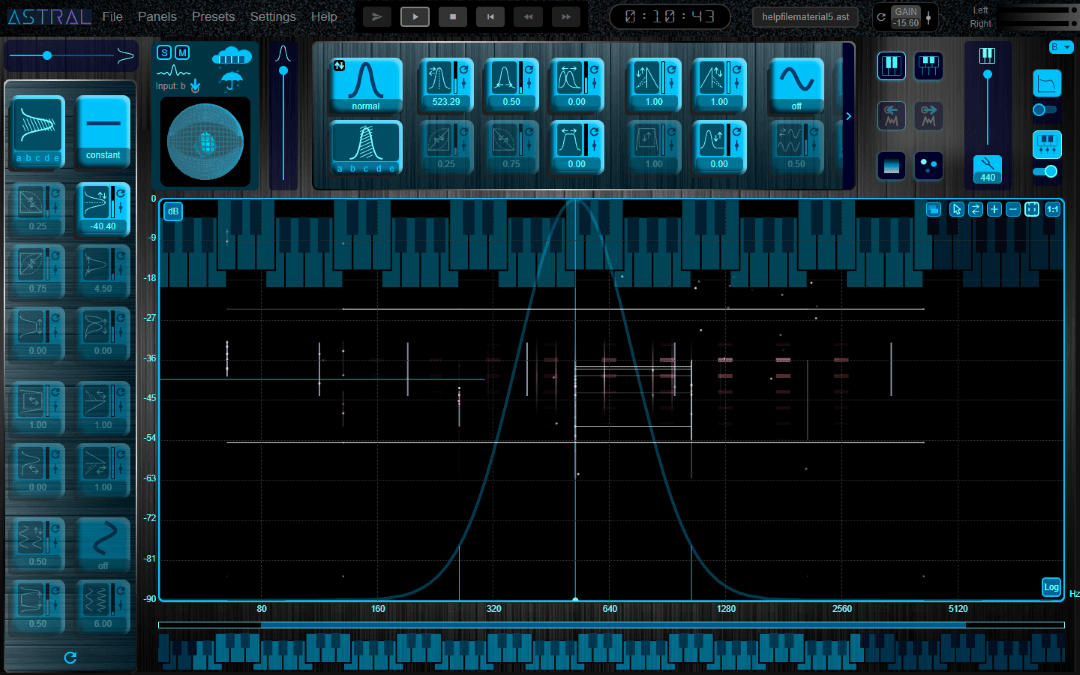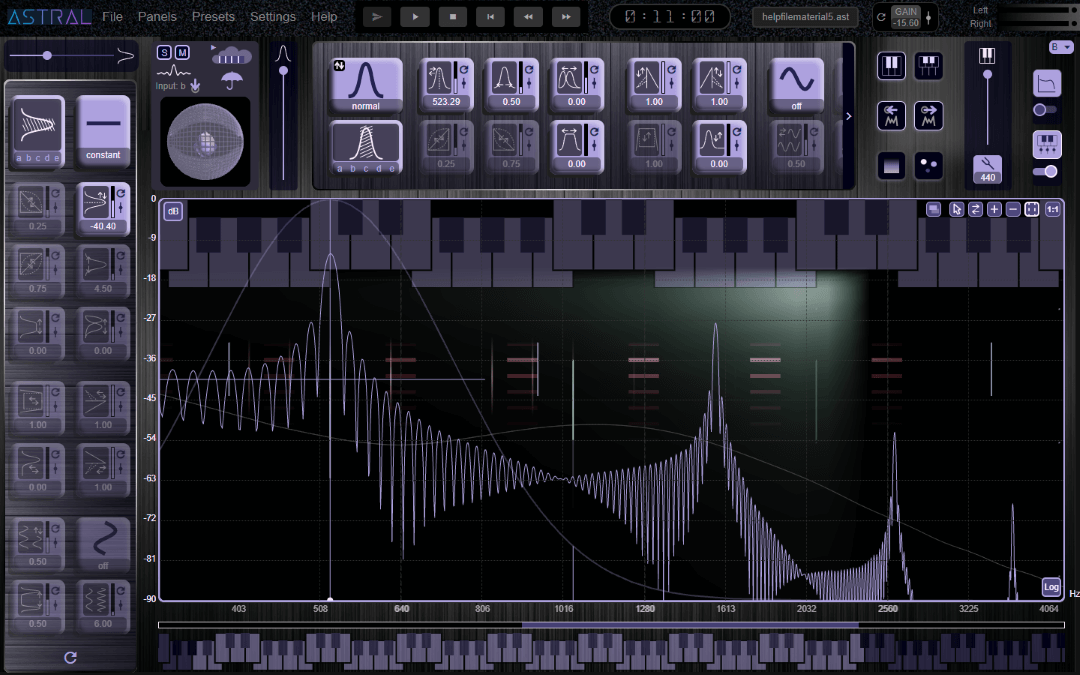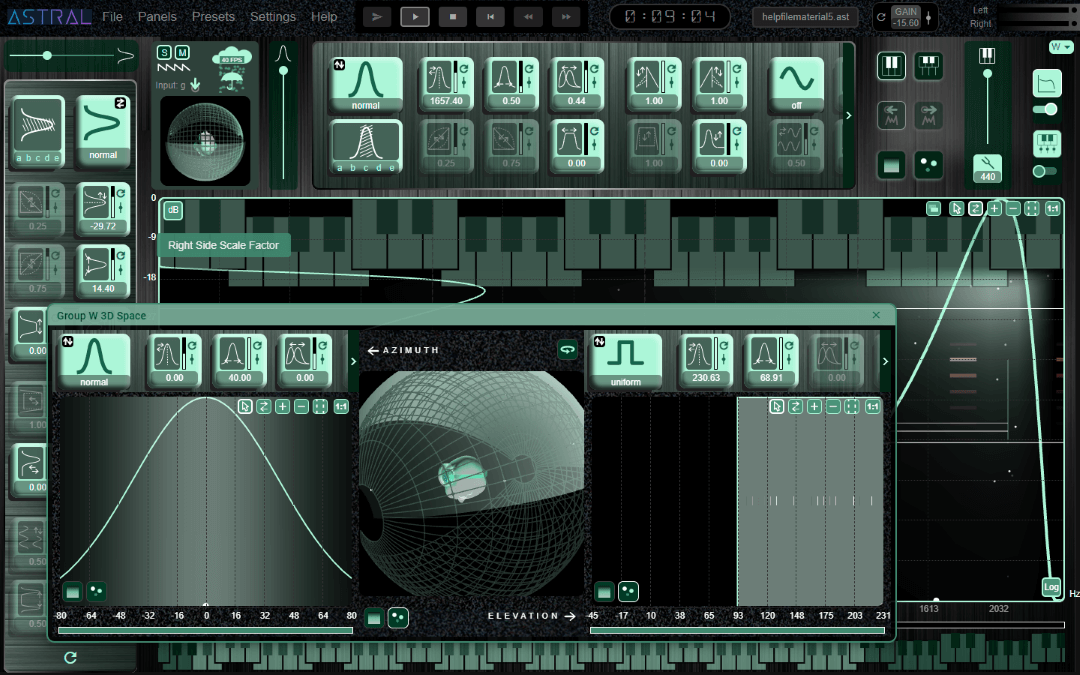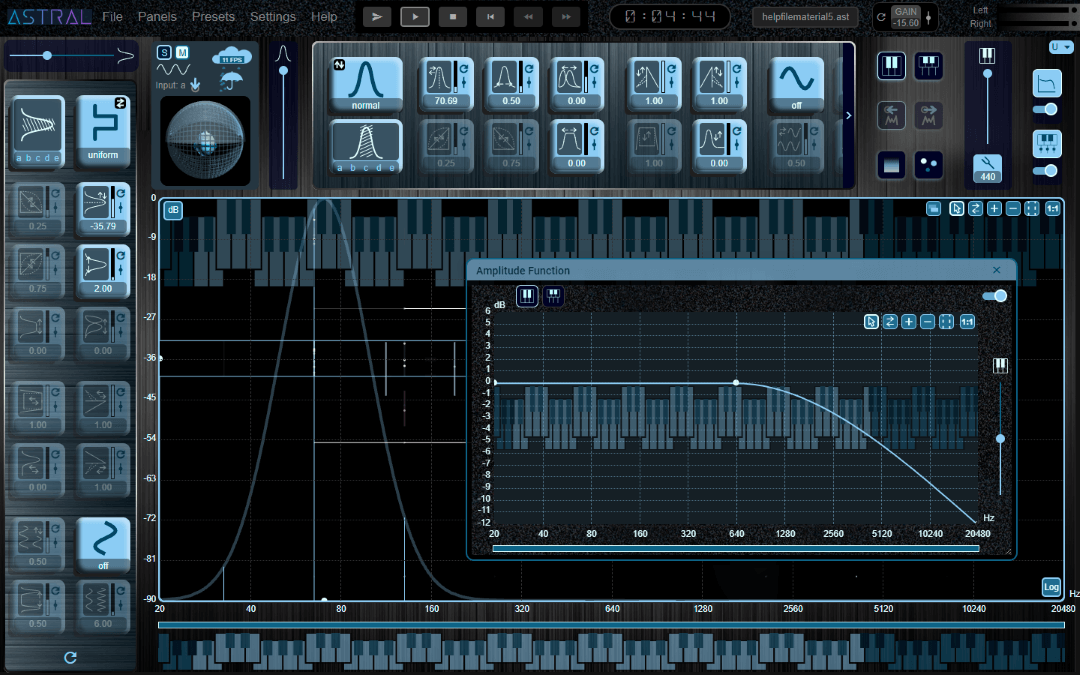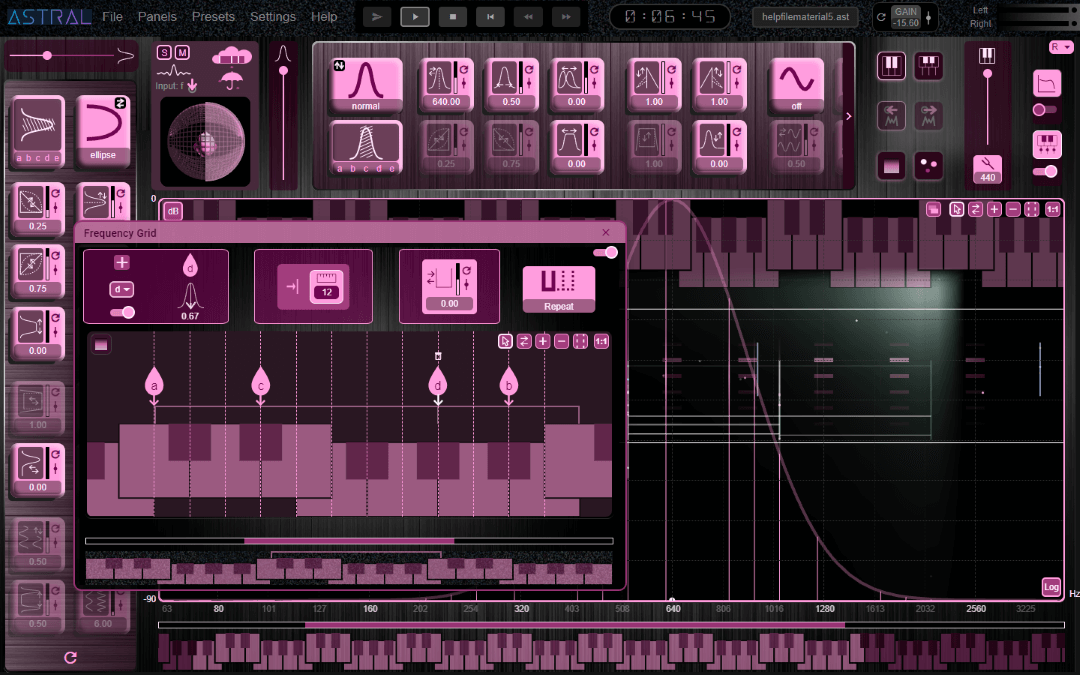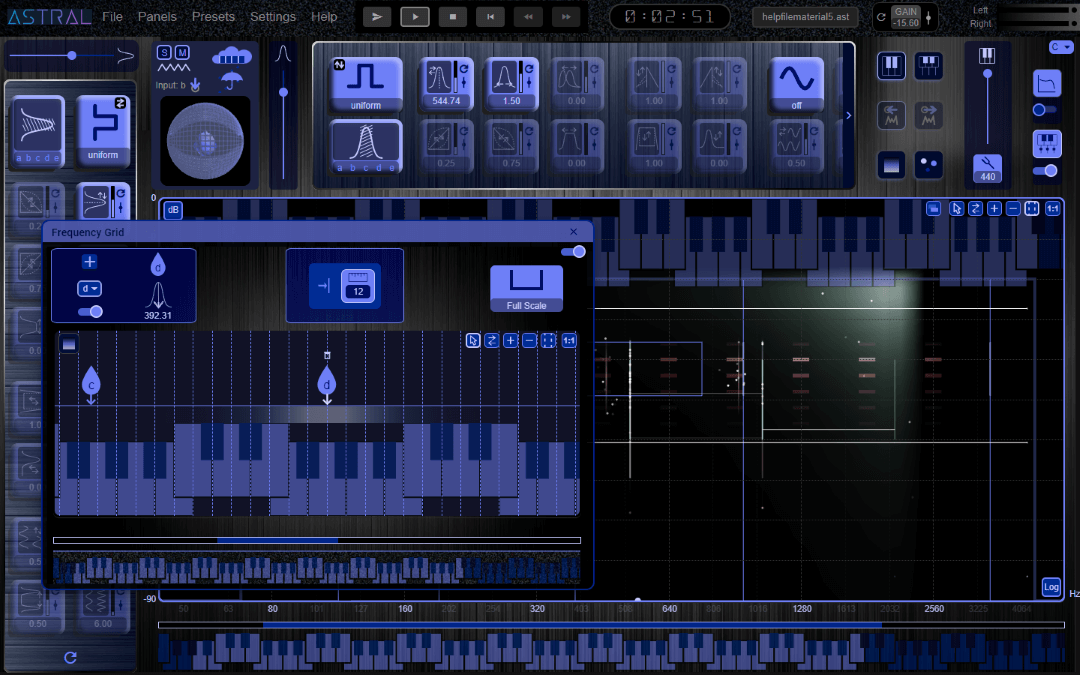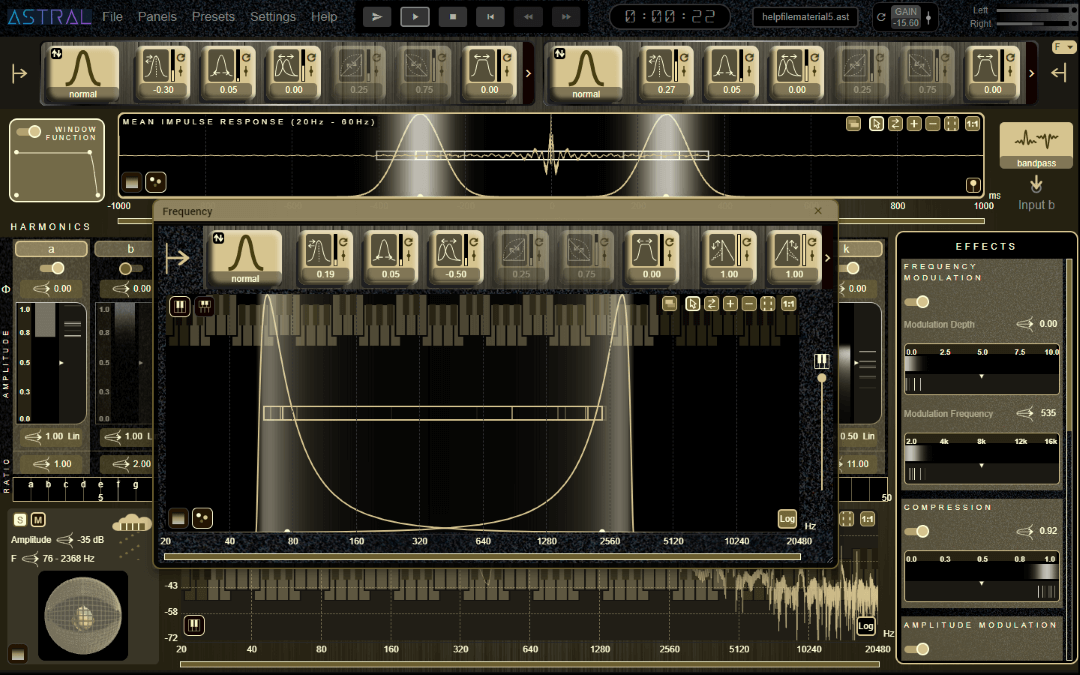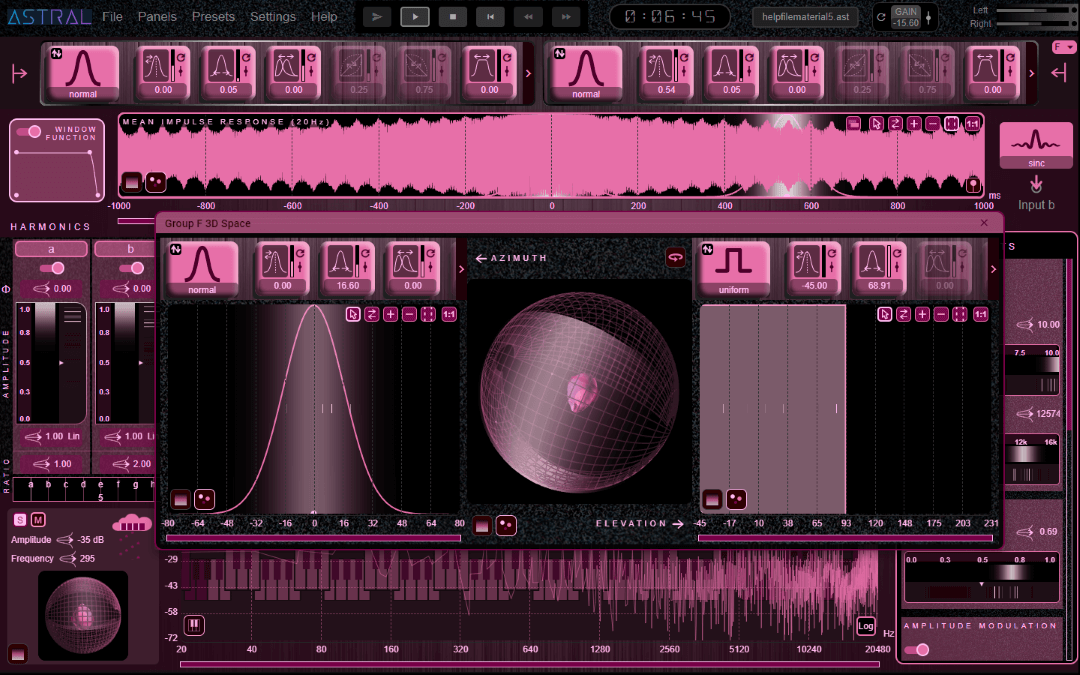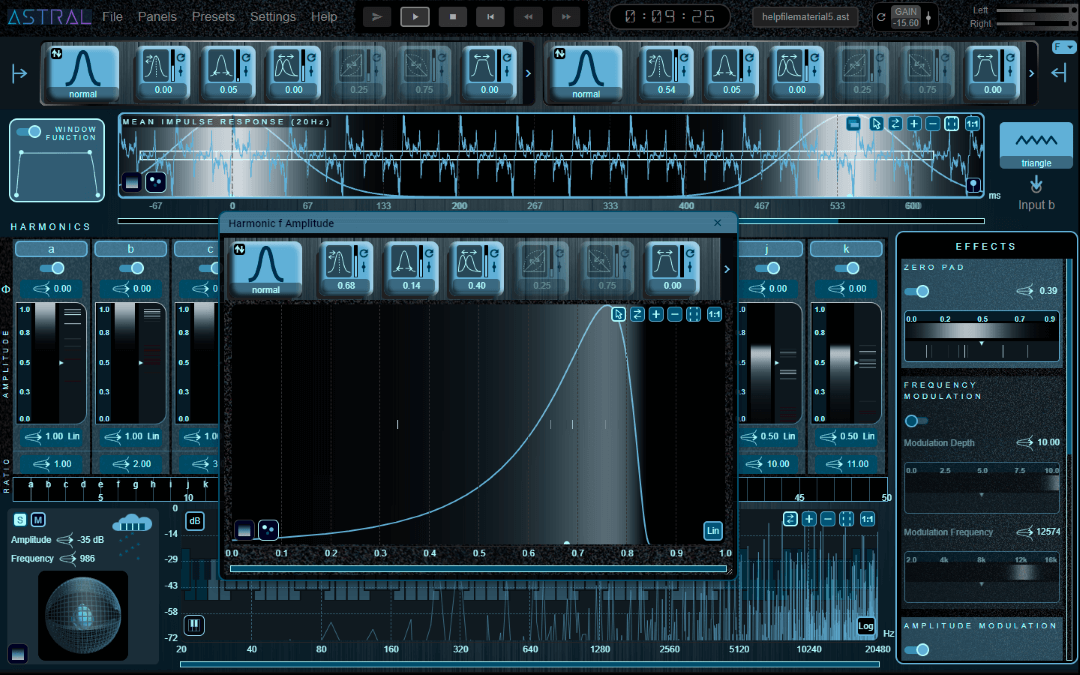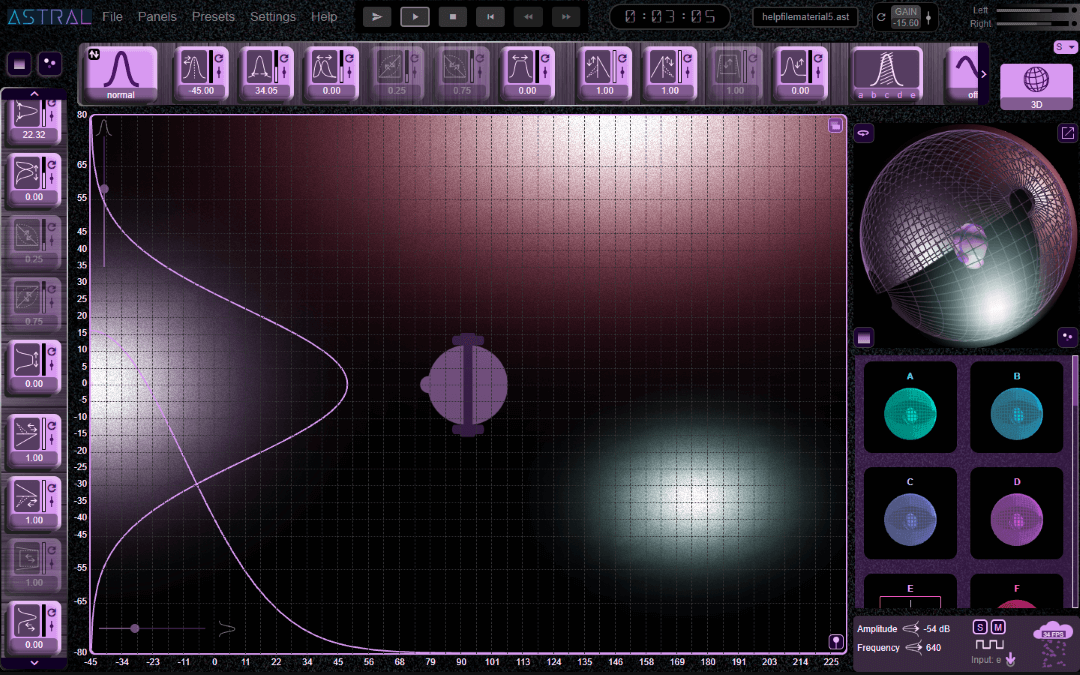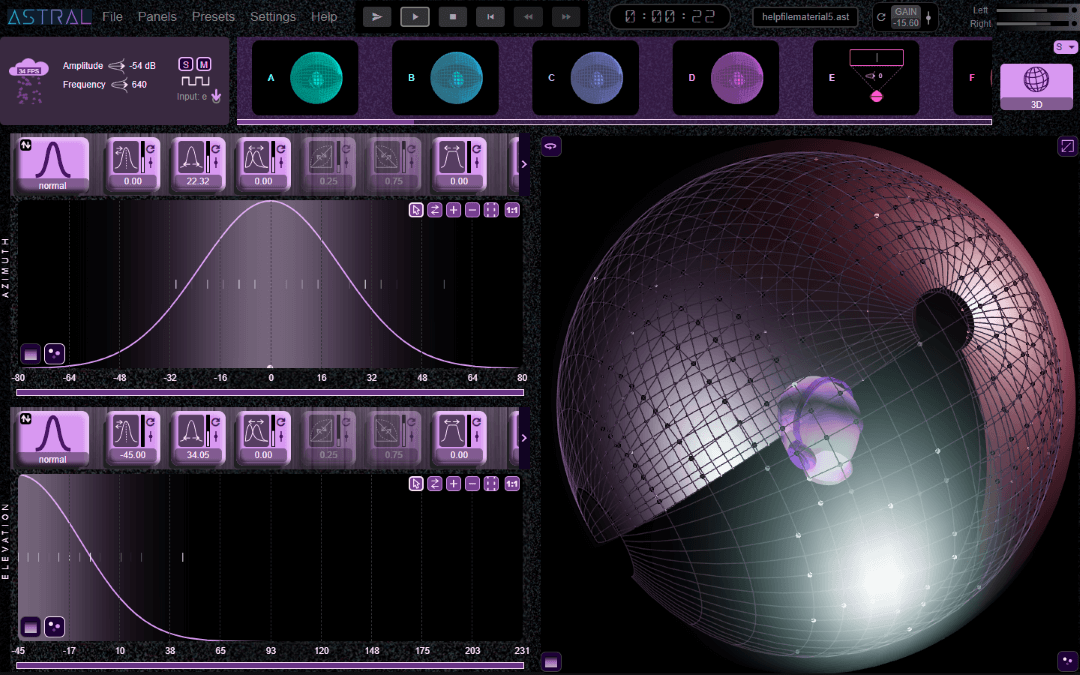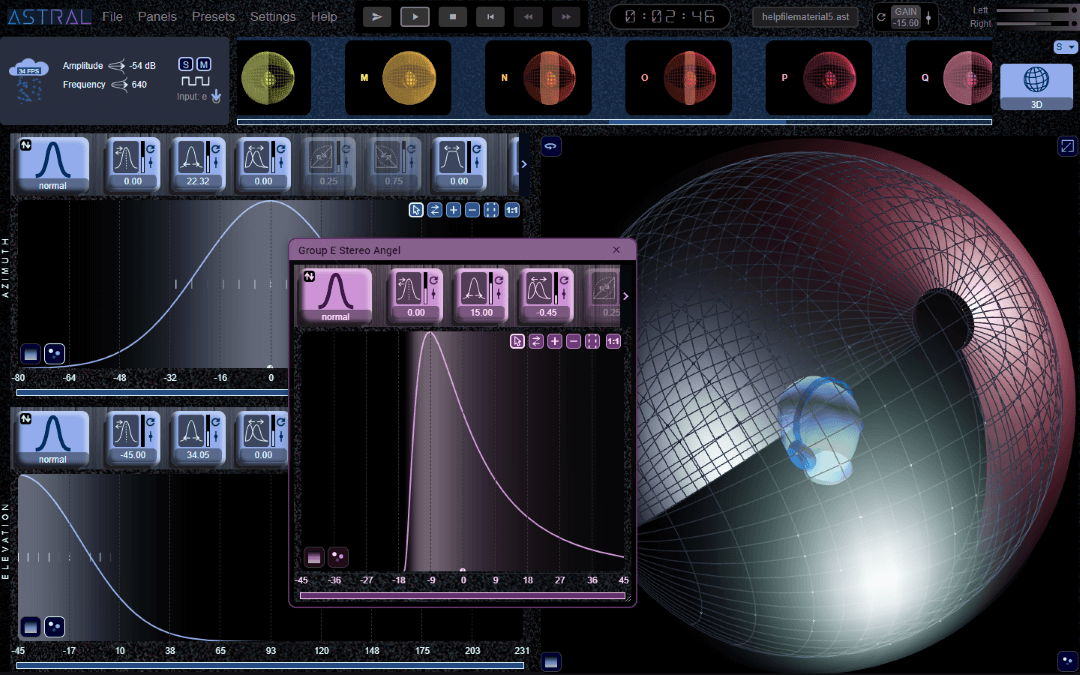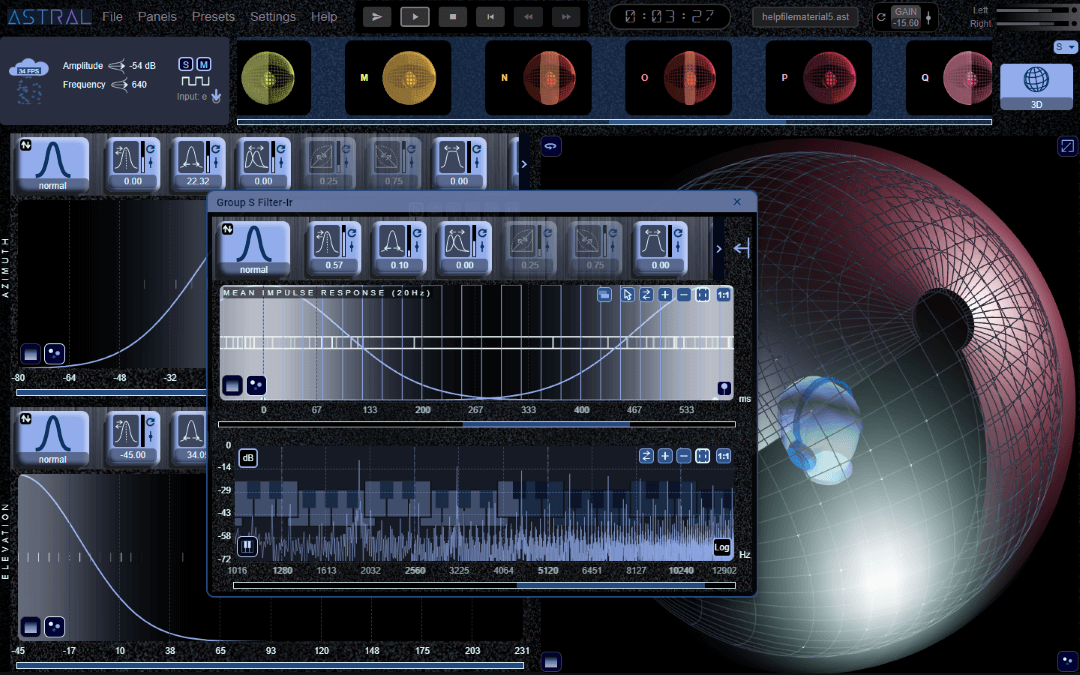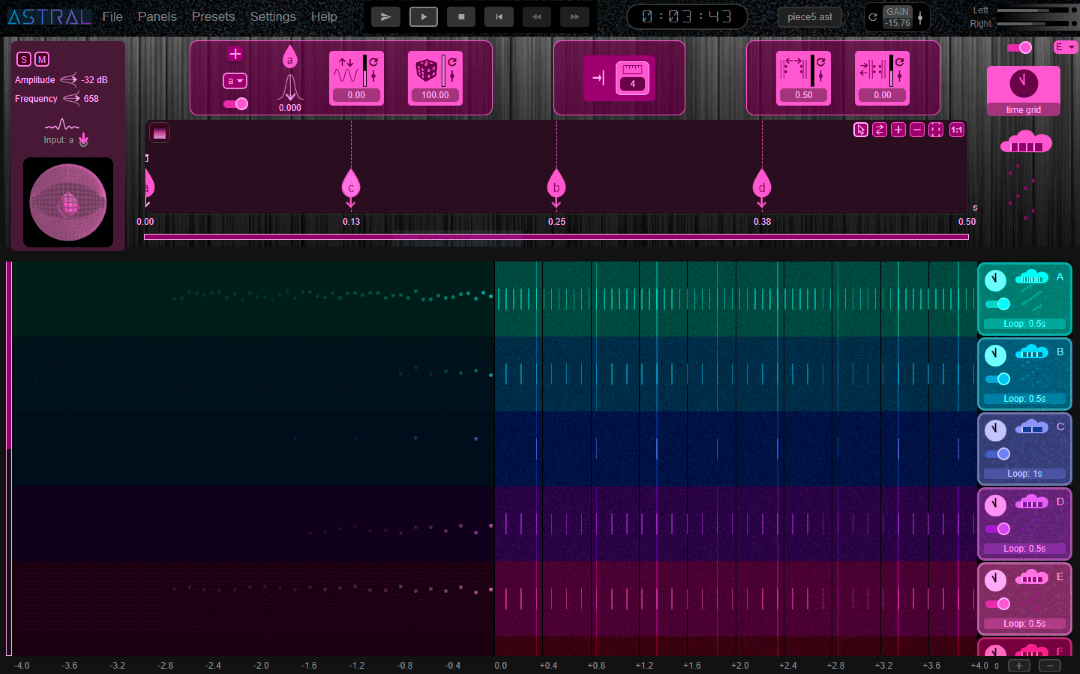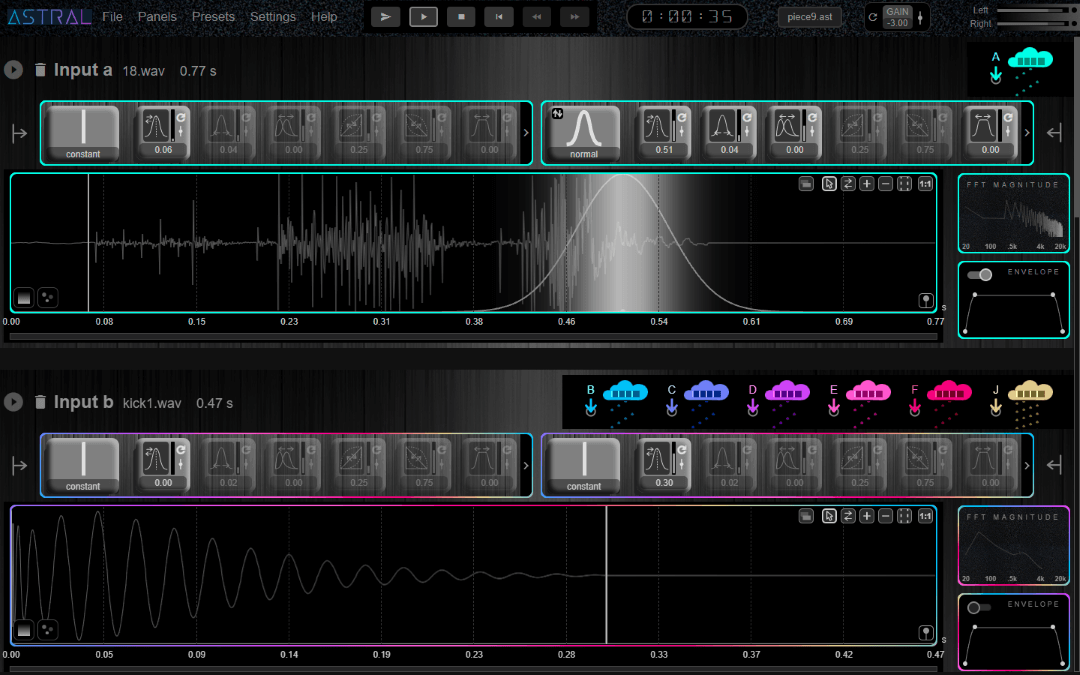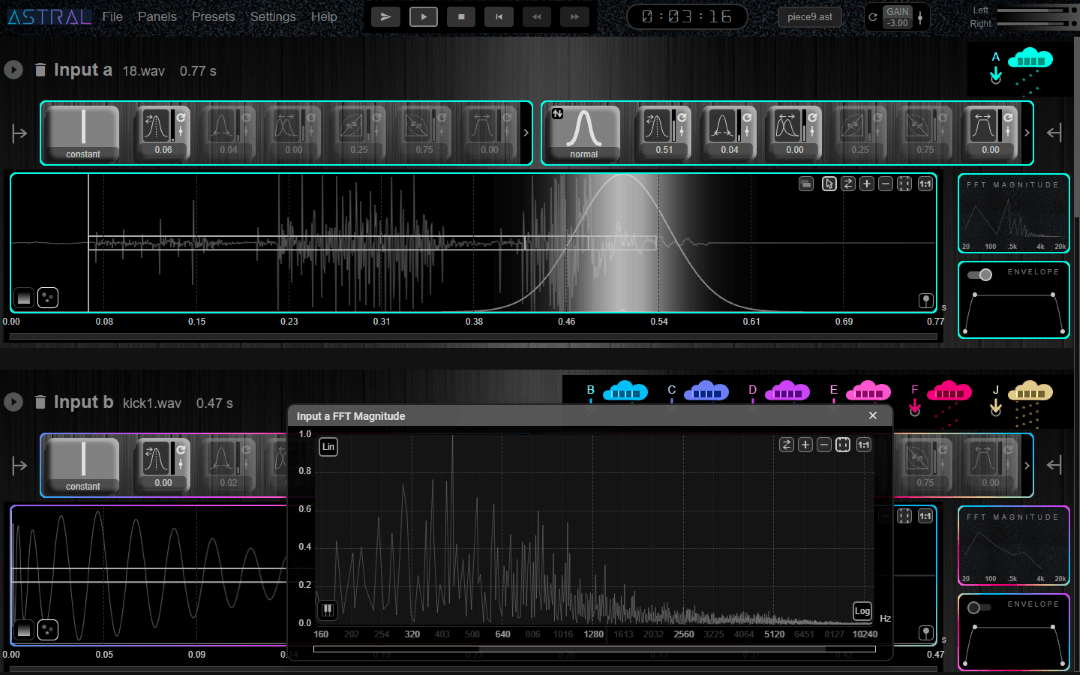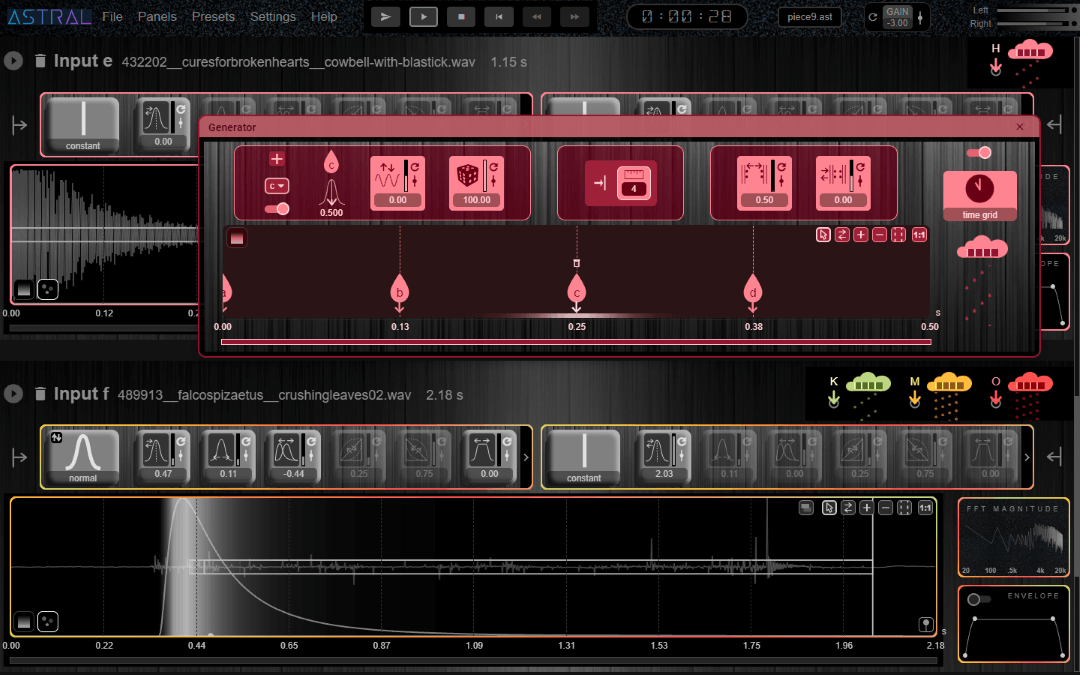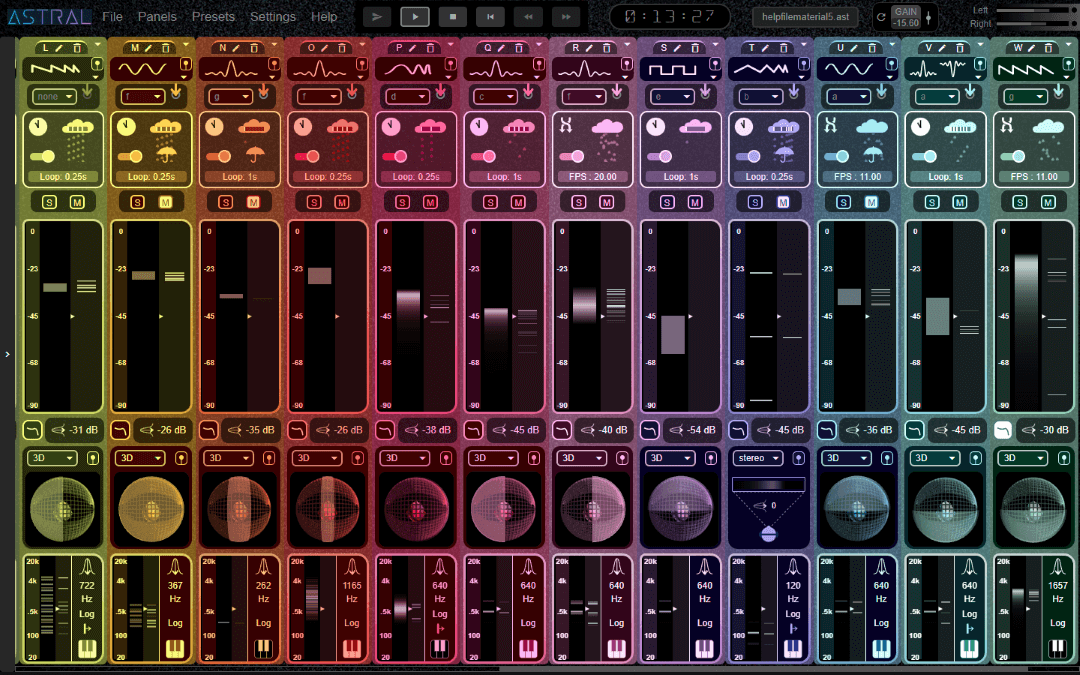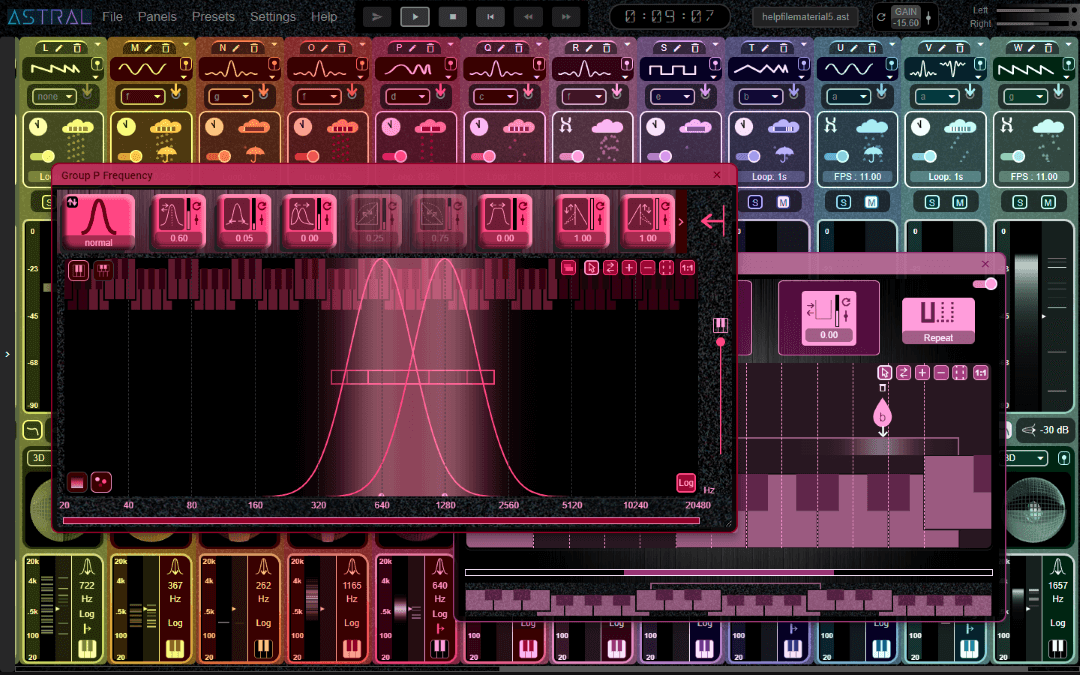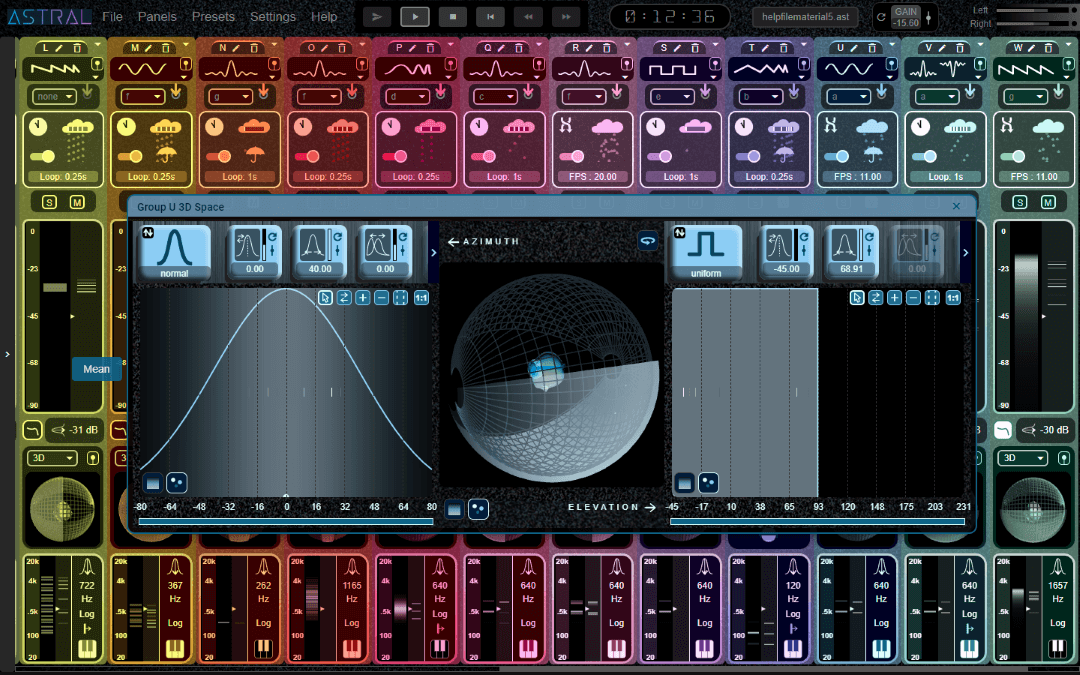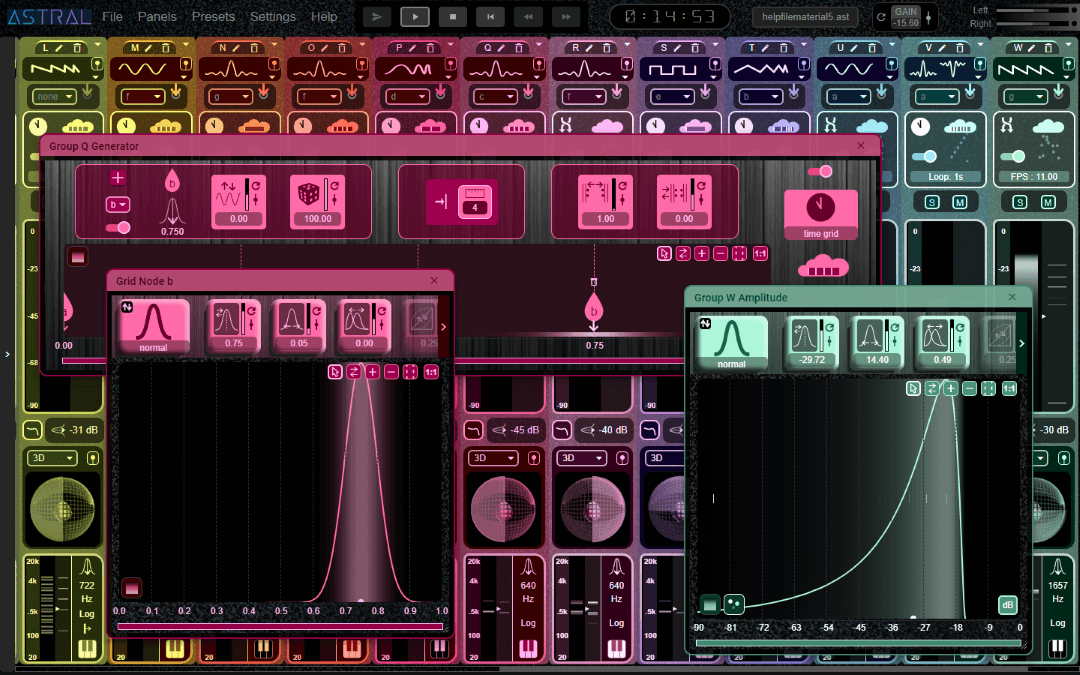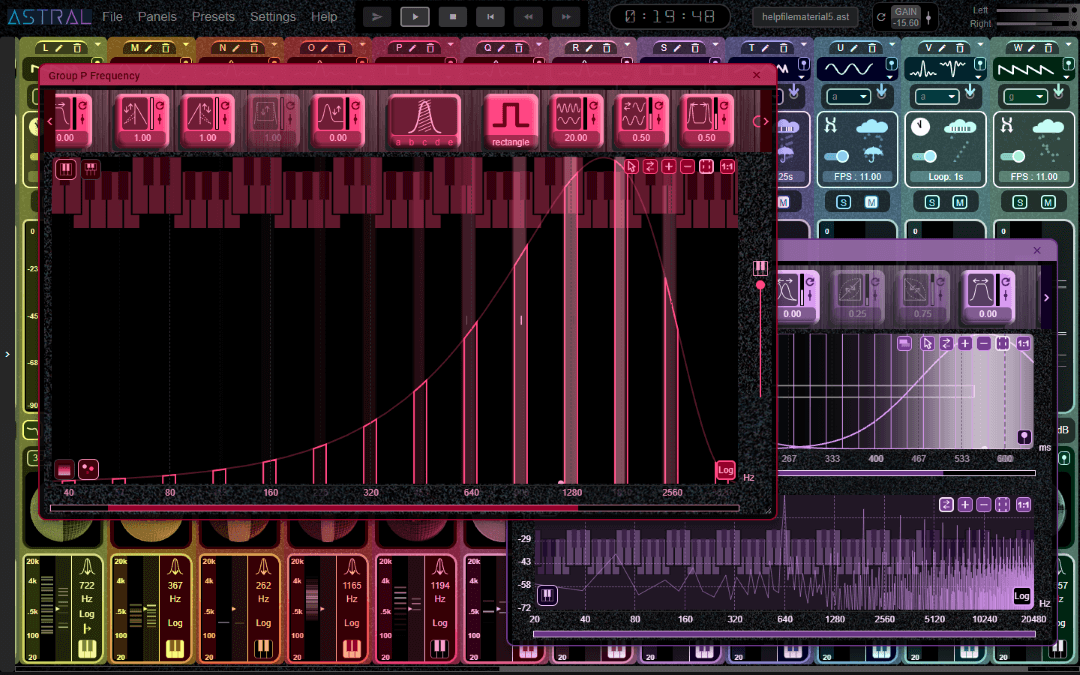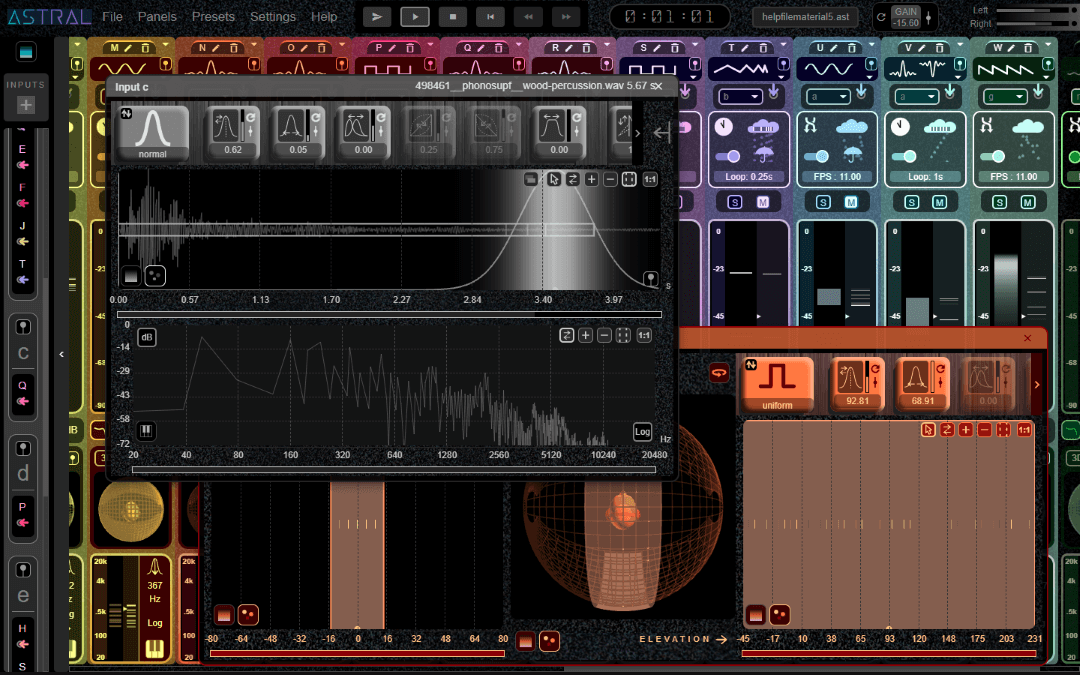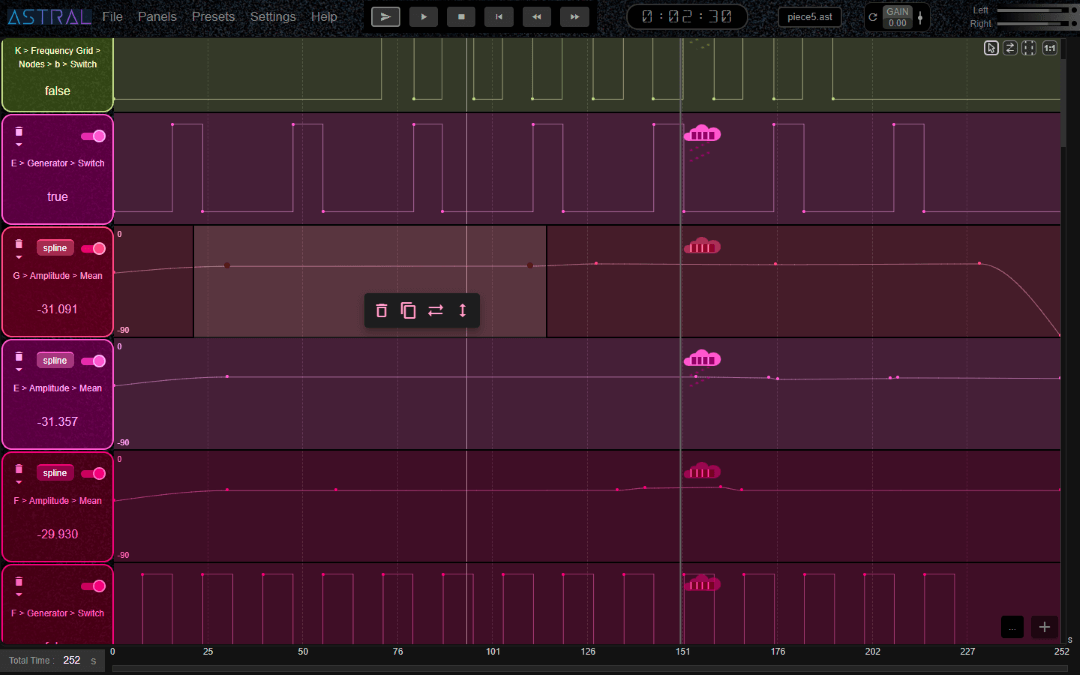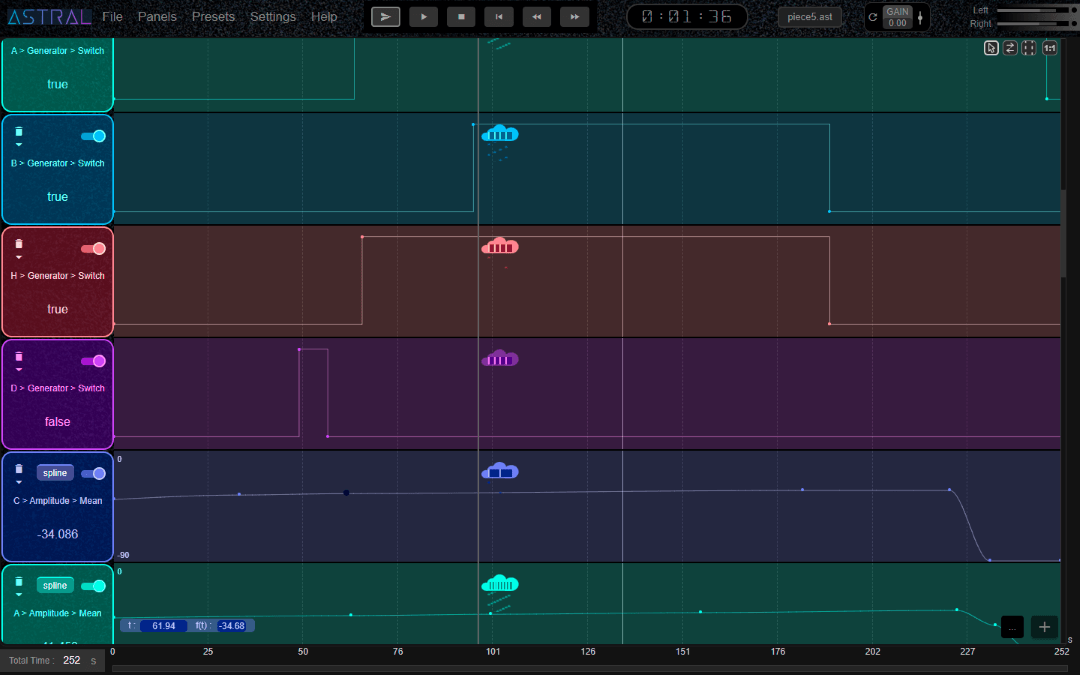Make Music with Probability
World's First Probabilistic Convolution Synthesizer
The Ultimate Destination for Generative Music
No Registration Required
What is ASTRAL ?
Astral is a standalone sequencer and synthesizer that lets you quickly create original music with complex and highly-detailed sound textures. It aims to be a general and comprehensive environment for probabilistic composition and sound design. In addition, ASTRAL includes a powerful convolution engine that allows for stochastic filtering of user-defined inputs. ASTRAL offers a friendly interactive graphic interface and highly unified control mechanisms for convenient definition and dynamic modification of probabilistic sound parameters.
Astral is a powerful sequencer and synthesizer that lets you quickly create original music with complex and highly-detailed sound textures. It aims to be a general and comprehensive environment for probabilistic composition and sound design. In addition, ASTRAL includes a powerful convolution engine that allows for stochastic filtering of user-defined inputs. ASTRAL offers a friendly interactive graphic interface and highly unified control mechanisms for convenient definition and dynamic modification of probabilistic sound parameters.
Astral is a standalone sequencer and synthesizer that lets you quickly create original music with complex and highly-detailed sound textures. It aims to be a general and comprehensive environment for probabilistic composition and sound design. In addition, ASTRAL includes a powerful convolution engine that allows for stochastic filtering of user-defined inputs. ASTRAL offers a friendly interactive graphic interface and highly unified control mechanisms for convenient definition and dynamic modification of probabilistic sound parameters.
Astral is a powerful sequencer and synthesizer that lets you quickly create original music with complex and highly-detailed sound textures. It aims to be a general and comprehensive environment for probabilistic composition and sound design. In addition, ASTRAL includes a powerful convolution engine that allows for stochastic filtering of user-defined inputs. ASTRAL offers a friendly interactive graphic interface and highly unified control mechanisms for convenient definition and dynamic modification of probabilistic sound parameters.
ASTRAL Panels
Frequency / Amplitude panel
In ASTRAL, independent so called filter (convolution) groups create the output sound. Each filter group is a probabilistic additive synthesizer with its own automatable parameters. Each group has the option to be connected to and subsequently, convolved with a user-defined input sound.
In the Frequency/Amplitude panel, users can define dynamic probability functions for frequency and amplitudes of each filter group. Even though the frequency space is continuous by default, the Frequency Grid window included in this panel provides the option of choosing specific notes. Actual generated random samples are visualized on the panel in real-time.
Filter Impulse Response Panel
In this panel, users can apply probability to define each group’s timbral characteristics. These include an impulse response function choice, its harmonic content, and applied effects. Unlike classic filters, ASTRAL gives the user the ability to control the filter’s impulse response directly in the time domain. This results in great variety in filtering and facilitates the coloring of stochastic sound textures.
Space Panel
ASTRAL groups can output in stereo, multi-channel, and 3D modes. In the Space Panel, probability functions are applied to spatial parameters of sound. To help the users easily localize sound textures, the panel includes a visualized 3D model of the expected localizations with color-coded 3D surfaces and LEDs.
Generator Panel
In ASTRAL, a filter group has a generator that is responsible for creating the group’s rhythm. It can either be set to ‘random’ or ‘time-grid’. In the random mode, a filtering rate (in convolutions per second) is defined as general behavior of the generator. In contrast, the time grid mode allows for defining specific rhythm loops.
